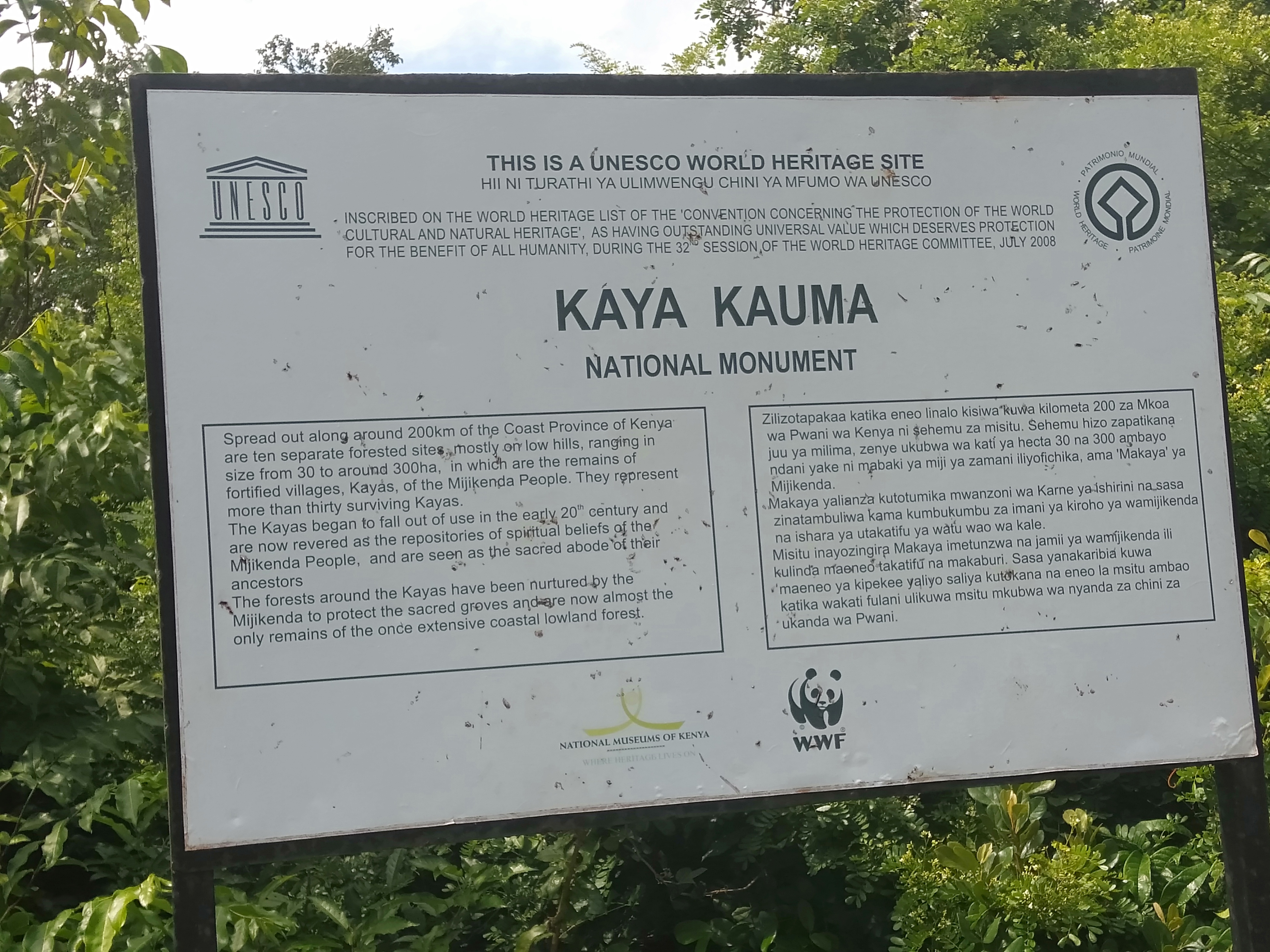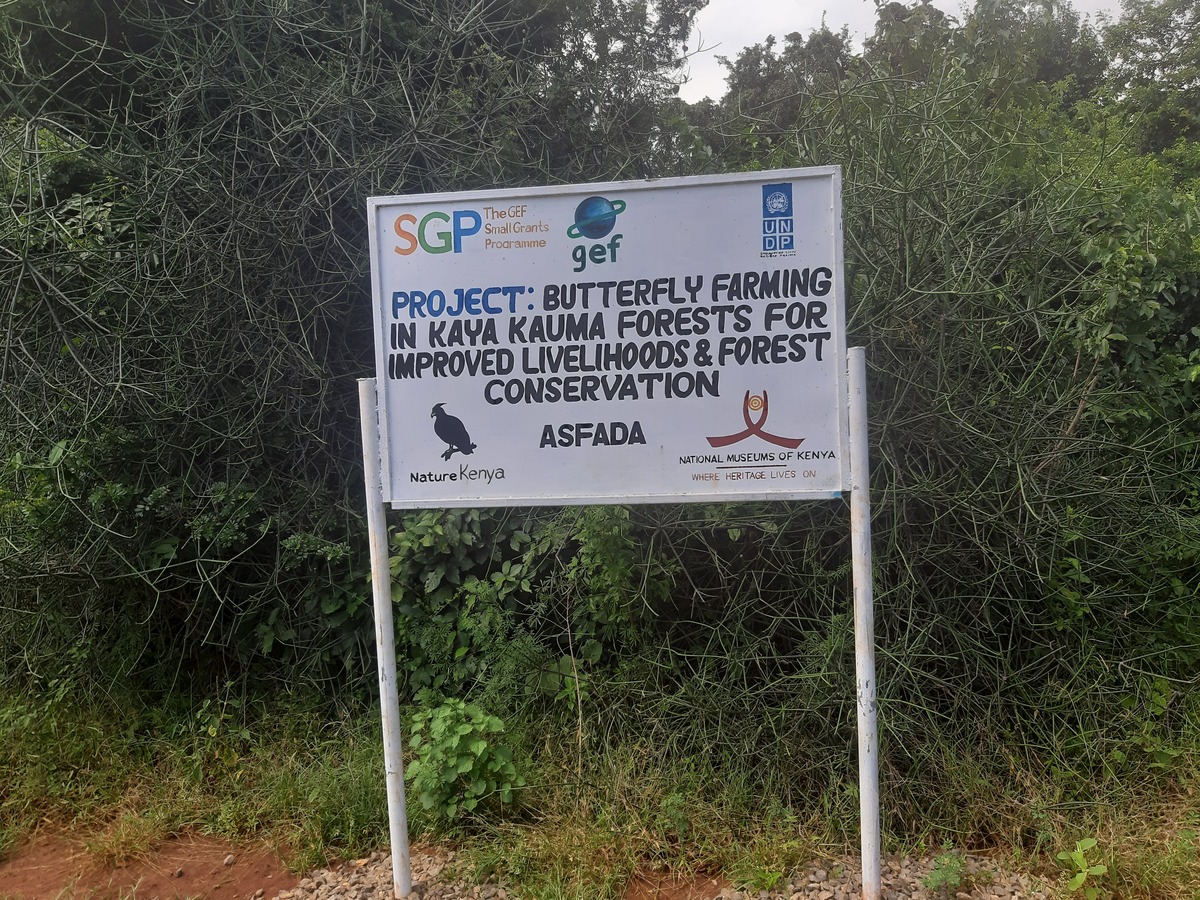Meet the shrines holding together remnants of Africa’s largest coastal forest
A century ago, a walk through the Kaya Kauma forest in Kenya’s Kilifi County would have been unrealistic; wandering through its thick forest cover would have led a traveller to end up in Somalia or Mozambique, two countries located in two different regions of the African continent.
The 75-acre fragment is among the last remnants of what was once Africa’s largest coastal forest.
Thanks to the Mijikenda community’s culture and beliefs, parts of the rapidly declining forest have survived the scramble for agricultural land, mining and land conversion for buildings residential complexes to respond to rapid urbanization.
The destruction of forest cover has been listed as the third largest source of carbon dioxide emission, the most prevalent of all greenhouse gases.
In Kenya, entering a forest cover and clearing it is only allowed when gathering medicinal herbs and carving a kigango (a wood carving planted in a shrine to represent a deceased special Mijikenda elder). The community’s council of elders are tasked with ensuring that the community members uphold these conservation rules.
According to 67- year- old Hillary Mwatsuma Kalama, a Kaya elder and the chairman of the Kaya Kauma, the forests have remained sacred to the members of the community due to the presence of prayer shrines within the forest.
This tradition of showing deep respect for the forests has been passed down to younger generations.
Tom Kombe, a 27-year-old radio presenter who grew up in Mombasa, Kenya’s second-largest city is one of the young people who ascribe to Christianity but hold the forest in high regard.

27 year old Tom Kombe, a Kenyan radio presenter who believes in the scared value of the Kaya forests poses at the Baraka FM studio.
Janet Murikera
Kenya has nine forest fragments: Kaya Duruma, Kaya Kambe, Kaya Kinondoni, Kaya Giriama, Kaya Chonyi, Kaya Ribe, Kaya Rabai, Kaya Kauma and Kaya Jibana which cover a total of 1530 hectares. All forests are all listed as UNESCO world heritage sites.
According to Lawrence Chiro, a conservation officer with the National Museums of Kenya, the national body mandated with preserving the Kenyan heritage, the Kaya forests are a perfect example of the important role indigenous communities can play in fighting climate change.

The UNESCO statement stating the logic behind the listing of the Kaya Kauma forest as a heritage site.
Janet Murikera
In developing countries, forests have been identified as the most effective buffer to climate change.
Kenya’s pledge to the Paris Climate Change Agreement indicates that the east African country hopes to increase its forest cover by up to 10% from the current 6% by 2030.
However, deforestation has been a huge problem in Kenya with officials from the Kenya Forest Service (KFS), the national body mandated with protecting forests, often being blamed for aiding illegal timber rackets to operate inside government protected forests.
In 2018, the Ministry of Environment, Forestry and Natural resources banned logging and tree harvesting and fired several KFS officials over their alleged involvement in the illegal timber rackets.
While things may look all rosy for the Kaya elders, the very same culture they defend so fiercely has in recent times come back to haunt them as elderly people in the Mijikenda community are routinely killed on accusations of practicing black magic which is blamed on misfortunes such as drought and deaths of young people.
According to Patience Kadzo, a program officer with Caring for the Old Kilifi, a local NGO that works with old people who have fled the violence in their homes, at least eight elderly people are lynched in the Mijikenda community every month.
According to Chiro, the spate of murders is among the biggest challenges facing the conservation of the Kaya forests.
“Old people are shying away from the activities of the Kaya council of elders because of such attacks and hence you find the forest oversight councils are weakened” Chiro says.

A statement of the recently launched butterfly farming project at the Kaya Kauma forest.
Janet Murikera
The latest development forced the National Museums of Kenya and other organizations involved in the conservation of Kaya forests to explore income generating opportunities for young people living around the forest.
In 2019, a butterfly farming project targeting people living near the forest was launched and Chiro says there are plans to explore carbon trading as an alternative income generating opportunity.


